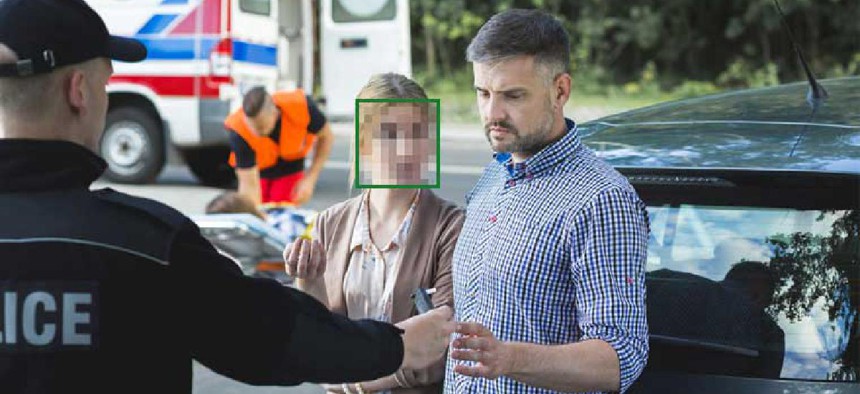Cloud-based video redaction saves valuable staff time


Connecting state and local government leaders
The Eureka, Calif., Police Department uses a cloud- and artificial intelligence-based system to quickly find faces, license plates and computer screens that need to be redacted.
When an officer-involved shooting resulted in about 40 hours of video that the Eureka, Calif., Police Department had to redact, Records Manager Amanda O’Neill didn’t flinch. She uses a cloud- and artificial intelligence-based system to help expedite the process.
“There was a lot of conversation between multiple officers over a long period of time, including about a five-hour standoff, so there was a lot of information that we needed to make public, but we also needed to redact a significant portion of different conversations that were talking about the individual’s medical history and psychiatric history as well as some family dynamics,” O’Neill said.
As the department’s sole user of Veritone’s Redact product, O’Neill reviews the videos and then runs them through the software, which uses AI to find forms such as heads, license plates and computer screens that often must be redacted. Afterward, she said, she goes through the video with a fine-tooth comb and redacts “anything else that I might recognize that I might want to clean up on the video.”
To use Redact, video reviewers log in and drag in the files they want to edit. Those files are uploaded into the cloud, and then users choose the type of AI they want to run – looking for heads vs. objects, for example, said Jon Gacek, head of government, legal and compliance at Veritone. The platform has more than 500 standard models that can be applied to data ingested from multiple sources, including CCTV footage and personal mobile devices.
“We pull [the data] up in the cloud and do our processing in the cloud, and that gives us a couple of advantages,” Gacek said. “One, it gives us the processing power that’s in the cloud across multiple compute [resources]. It also allows us to be innovative with the software so when we do an upgrade, for instance, all of our customers get access to it immediately.”
The software has an interface that allows reviewers to go through and determine with a yes or no mouse click whether they want to redact that piece of the video.
Additionally, when a video has an audio track, Redact uses an AI-based model to transcribe it and highlight potential personally identifiable information, such as someone stating their home address to an officer.
When departments receive the redacted file, it has an audit log that details all the changes.
It takes about 30 minutes of training to get users started with Redact, Gacek said, adding that the only technology prerequisites for using it are a PC and an internet connection.
In general, users report that redacting is five to 10 times faster with the technology, he said. For instance, if two squad cars with in-car cameras and two officers each who have body-worn cameras, “a 20-minute incident could very easily turn into a couple hours of video that has to be redacted. The more people that are in it, the longer it takes,” Gacek said. It could take one person all day to redact.
Previously, a digital evidence technician who used a component in the department’s body-worn camera platform for redacting video spent about 10 hours redacting a 10-minute clip of someone talking to an officer. Now, that type of video takes about 20 to 30 minutes to redact, O’Neill said.
“That was our big initial reason for needing a solution. Staff time is too valuable to spend an entire day on a 10-minute clip,” she said.
The number of public records requests the department receives has doubled each year for the past six years, O’Neill said, largely in response to passage of California Senate Bill 1421. Passed in 2018, it makes police records relating to officer use-of-force incidents, sexual assault and acts of dishonesty accessible under the California Public Records Act.
On July 19, Veritone announced that all law enforcement agencies that acquire body-worn cameras through a Bureau of Justice Assistance grant are eligible for six months of Redact at no charge. The grant funds cameras for any agency with 50 or fewer full-time sworn officers, rural agencies and federally recognized tribal agencies. More than 90% of local law enforcement agencies have 50 or fewer such officers, according to the Justice Department.




